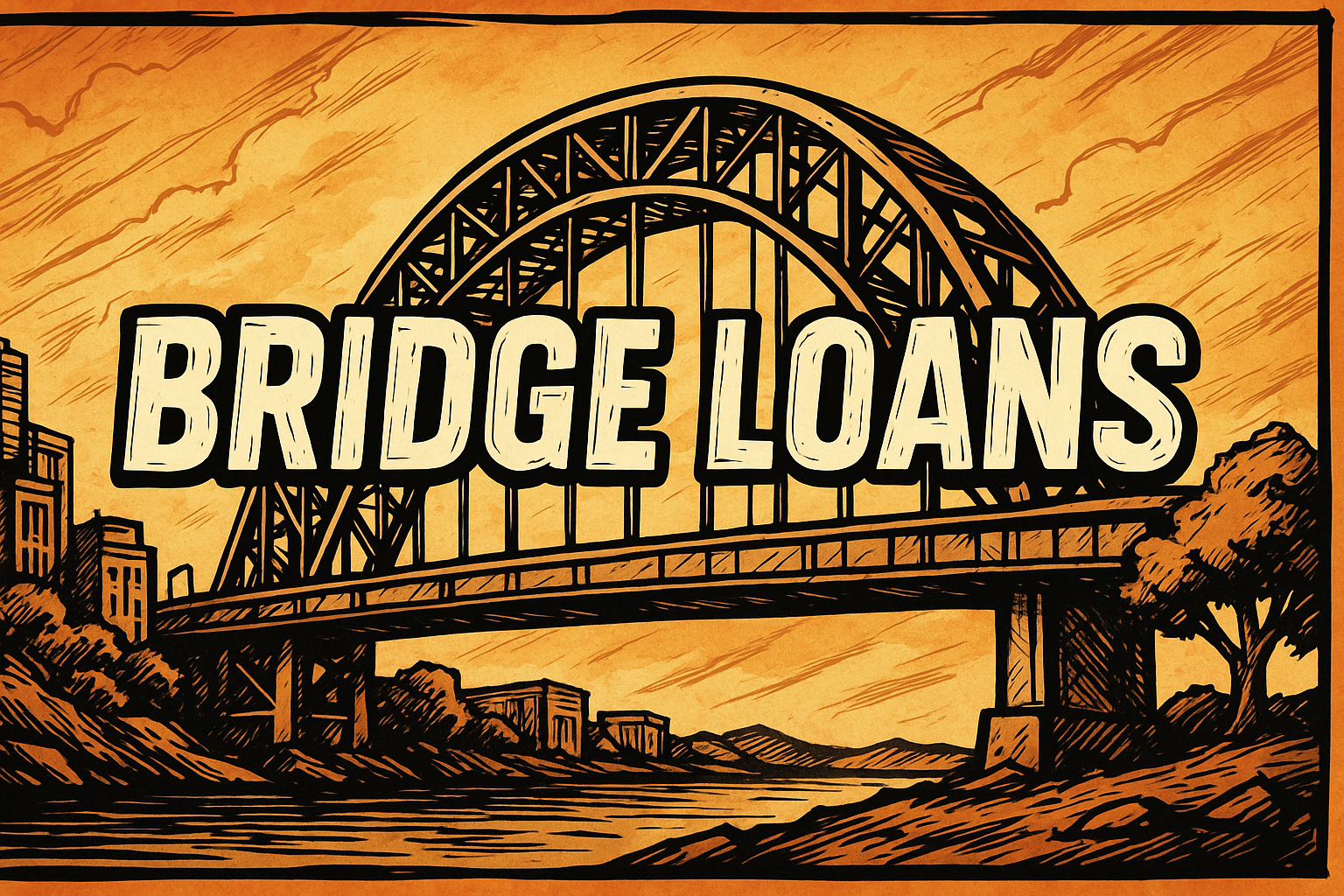Bridge Loans
“Bridge It Like a Boss”

Bridge Loan (aka Gap Financing or Interim Financing)
A bridge loan is a short-term, often interest-only loan designed to “bridge the gap” between a current need for funding and the future availability of longer-term or permanent financing.
Bridge Loan Characteristics
| Feature | Details |
|---|---|
| Term | Typically 6 to 24 months |
| Interest Rate | Higher than traditional loans (due to increased risk) |
| Repayment Structure | Often interest-only during the term, with a balloon payment at maturity |
| Collateral | Usually secured by real estate, inventory, or business assets |
| Exit Strategy | Clearly defined plan for how the loan will be repaid (e.g., sale, refinance) |
Common Use Cases
Commercial Real Estate Purchase
- Used to secure a property quickly while waiting for long-term financing approval or to sell another asset.
- Example: Developer uses a bridge loan to buy land, then refinances with a construction loan.
Business Acquisition
- Used when a buyer needs fast access to funds before a formal term loan closes.
Turnaround Situations
- Businesses undergoing restructuring or awaiting capital injection may use a bridge loan for working capital.
Construction/Development
- Used post-construction and pre-stabilization (i.e., before a property generates steady income).
Comparison Table: Bridge Loan vs. Traditional Loan
Feature | Bridge Loan | Traditional Loan |
Purpose | Temporary gap financing | Long-term financing |
Term Length | 6 to 24 months | 5 to 30 years |
Interest Rate | Higher (e.g., 8–15% or more) | Lower (e.g., 4–8%) |
Repayment | Interest-only with balloon payment | Regular principal and interest payments |
Collateral | Required (often high-value assets) | Usually required |
Risk | Higher, due to greater repayment risk | Lower, if cash flow is stable |
Lender’s Perspective
Lenders view bridge loans as high-risk, high-reward. They typically:
Require strong collateral
Demand a clear exit strategy
May include extension fees, prepayment penalties, or conversion options into permanent loans
Bridge Loan Example Scenarios
Example Scenario: Quick Warehouse Purchase
Situation: A business owner is buying a warehouse listed at a deep discount, but their SBA loan won’t close for 90 days.
Bridge Loan Use: They take a 6-month bridge loan, buy the property, then repay it using the SBA proceeds.
Result: They secure the deal quickly and avoid losing the asset to a competing buyer.
Example Scenario: Commercial Property Upgrade
Situation: A landlord wants to buy and renovate a small apartment complex, but their permanent financing won’t be available until the property meets occupancy standards.
Bridge Loan Use: They take a 12-month bridge loan to acquire the building and fund light renovations.
Result: The owner brings the units up to code, leases them out, and refinances with a stabilized long-term mortgage.
Example Scenario: Retail Business Turnaround
Situation: A boutique chain is facing a cash crunch while waiting on investor funding and a tax refund, but they need to restock inventory ahead of a high-traffic season.
Bridge Loan Use: The owner uses a 9-month bridge loan to cover operating costs and inventory restock.
Result: They maintain sales momentum, attract new investors, and repay the loan once new funding closes.
Example Scenario: Post-Construction Financing
Situation: A developer has just completed building a mixed-use complex, but banks won’t issue permanent financing until it reaches 85% occupancy — which could take 6 months.
Bridge Loan Use: They use an 8-month bridge loan to cover holding costs and marketing until tenants move in.
Result: They meet the occupancy target, qualify for long-term financing, and exit the bridge loan smoothly.
Example Scenario: M&A Fast Track
Situation: An entrepreneur is acquiring a small manufacturing company, but the bank’s due diligence process will take 60–90 days. The seller wants to close in 30.
Bridge Loan Use: The buyer secures a bridge loan to fund the acquisition upfront.
Result: The deal closes on time, ensuring the buyer doesn’t lose out — then the bridge is repaid once the term loan funds.
Example Scenario: Residential Bridge Loan
Situation: A homeowner finds their dream home but hasn’t yet sold their current house. They don’t want to risk losing the new property.
Bridge Loan Use: They take a short-term bridge loan to purchase the new home before their old one sells.
Result: They move into the new home without pressure to sell below value, and repay the bridge loan when the old house closes.

Who Should Avoid Bridge Loans
Bridge loans may not be suitable for:
Businesses with unpredictable revenue streams or seasonal income
Borrowers lacking clear exit strategies
Those with poor credit or insufficient collateral
Situations where the cost of capital outweighs the benefit of speed

